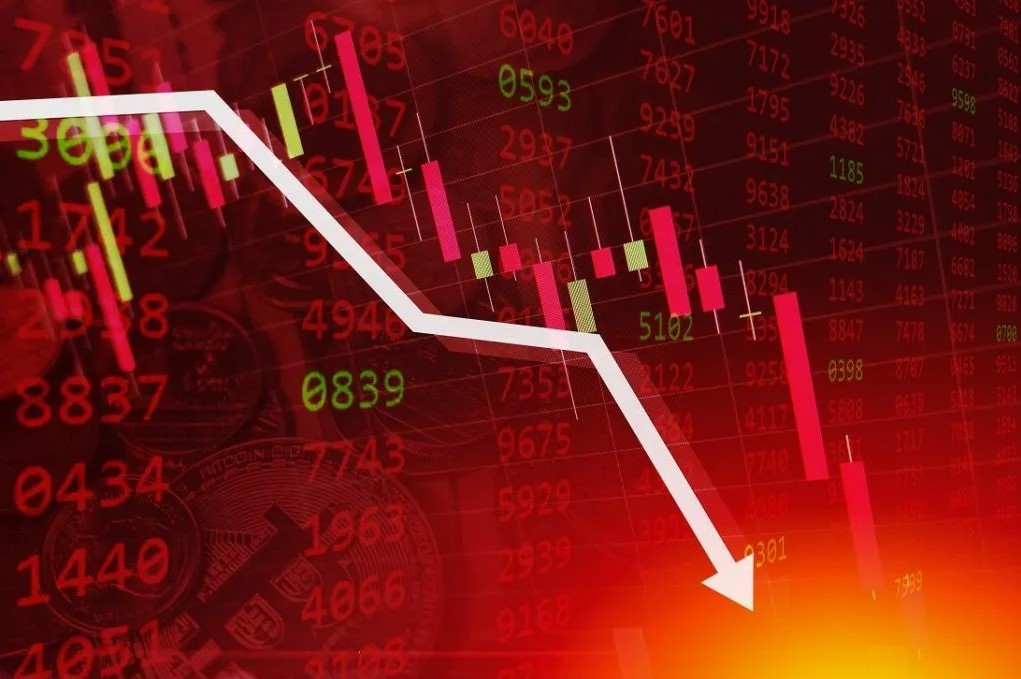
In A Nutshell:
In early August 2024, the cryptocurrency market witnessed a dramatic downturn, with major cryptocurrencies like Bitcoin and Ethereum experiencing significant price declines. This article delves into the multifaceted reasons behind this crash, examining the broader economic context, specific triggers, and the resulting implications for investors and the market at large.The crash occurred against a backdrop of growing economic uncertainty and market volatility. Key economic indicators and geopolitical developments played a crucial role in shaping investor sentiment.
Global Stock Market Volatility: The Japanese Nikkei 225 index dropped more than 12% overnight, marking a significant event that sent shockwaves through global financial markets. This decline was largely influenced by the Bank of Japan's decision to raise interest rates for only the second time since 2007, which disrupted long-standing carry trades and led to a rapid unwinding of leveraged positions.
Recession Fears: Weak economic data from the United States, including disappointing jobs numbers and underwhelming tech earnings reports, exacerbated fears of a potential global recession. The reluctance of the Federal Reserve to cut interest rates further heightened these concerns, prompting investors to retreat from high-risk assets like cryptocurrencies.
Geopolitical Tensions: Rising tensions between Israel and Iran added to the market's instability. Historical patterns have shown that geopolitical conflicts can lead to a flight to safety, with investors moving their capital into more stable assets such as cash or government bonds, further driving down the prices of riskier assets.
Beyond the broader economic factors, specific market dynamics and trading behaviors contributed to the sharp decline in crypto asset prices.
Automated Trading and Liquidations: Automated trading systems and bots, which many investors use to manage their crypto portfolios, played a significant role in the crash. These systems are designed to execute trades based on preset criteria, such as price levels or technical indicators. As the market began to fall, these automated systems triggered a wave of sell orders, amplifying the downward momentum.
Leveraged Positions: Many traders in the crypto market use leverage to amplify their potential returns. However, this also increases their risk exposure. When prices began to drop, leveraged positions faced margin calls, forcing traders to sell off their holdings to cover their losses. This cascade of liquidations contributed to further price declines, creating a feedback loop that intensified the market downturn.
Institutional Sell-Offs: Institutional investors, who hold substantial amounts of crypto assets, also contributed to the sell-off. Faced with increasing economic uncertainty and market volatility, some institutions decided to liquidate their positions to mitigate risk. The large volumes of assets involved in these sell-offs had a pronounced impact on market prices.
The crypto market crash of August 2024 highlights several critical lessons and potential future trends.
Market Volatility: The events underscore the inherent volatility of the crypto market. While this volatility can offer substantial rewards during bull markets, it also poses significant risks during downturns. Investors must be prepared for sudden and severe price swings.
Risk Management: The crash highlights the importance of effective risk management strategies, particularly for those using leverage. Proper risk management can help mitigate losses and prevent forced liquidations during market downturns.
Regulatory Scrutiny: As the crypto market continues to evolve, regulatory scrutiny is likely to increase. Regulators may introduce measures to protect investors and ensure market stability, which could have long-term implications for market structure and behavior.
Investor Behavior: The crash also illustrates the psychological factors that drive market behavior. Fear and panic can lead to rapid and widespread sell-offs, exacerbating market declines. Understanding these behavioral dynamics is crucial for both individual investors and market analysts.
The crypto market crash of August 2024 was a result of a complex interplay of economic, geopolitical, and market-specific factors. As the market continues to mature, these events provide valuable insights into the risks and dynamics of investing in cryptocurrencies. For investors, staying informed, implementing robust risk management strategies, and maintaining a long-term perspective will be essential in navigating the volatile landscape of digital assets.